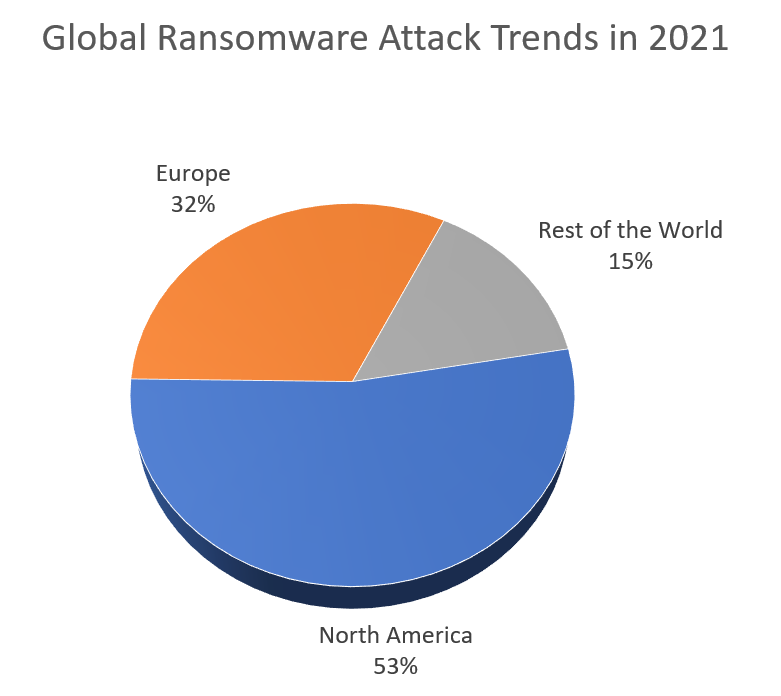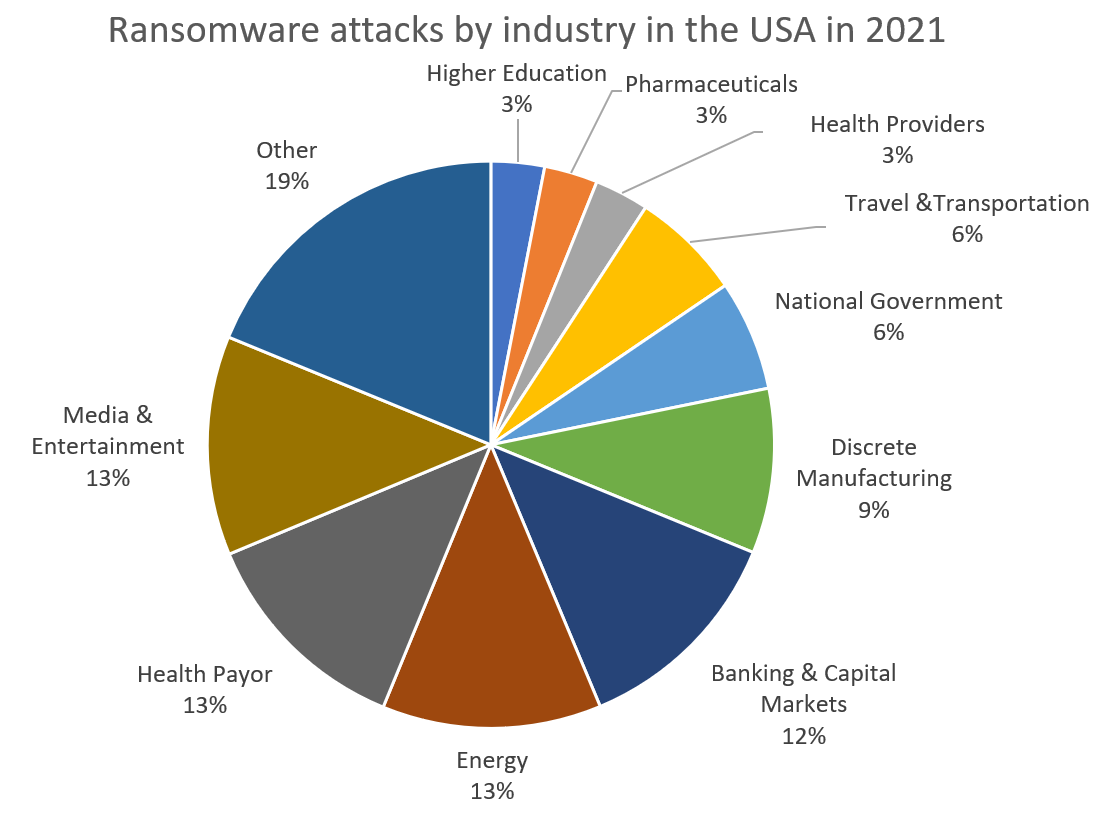The scale of the ransomware problem
When a ransomware attack occurs, most companies hand over huge sums to recover data quickly and minimize impact. It's suspected that the biggest payout was made by one insurance company, who reportedly paid more than $40 million to unlock data and restore its network. The company hasn't officially confirmed or denied this.
Here's an indication of the scale of the problem:
- Globally, known ransomware attacks in 2021 cost companies more than $20 billion.
- The working-from-home transformation caused by the COVID-19 pandemic led to a 178 percent increase in ransomware pay-outs.
- Ransomware attacks in the first half of 2021 exceeded the level for the whole of 2020.
- The top 10 targeted countries/regions in the western world make up approximately 87 percent of all attacks.
Indirect targets
We tend to think that only large organizations are at risk of a cyberattack, but individuals can be indirect targets too. Almost every device we use in our day to day lives has the capability to access the internet or to connect to our work servers and networks. This makes them susceptible to both direct and indirect attacks.
The following list highlights areas you might not have considered to be indirect targets:
- Personal items such as heart pacemakers, insulin devices, smartphones, smartwatches, body cameras, and fitness monitors that use cloud technology.
- Cars are increasingly using security software with online technology to secure and monitor any defects.
Recovering from a ransomware attack
Typically, there are only two ways to recover from a ransomware attack. Pay the ransom, or rely on your IT department to find a way to restore your systems. Many companies opt for the first choice, where the ransom costs vary depending on the size of your business and how valuable the data can be. Typical costs range from as little as $6,000 for a small business to millions of dollars for larger corporations. By giving money to the attackers, you're helping to increase the problem, so the advice is always not to pay.
When a business pays a ransom:
- Only 65% of stolen data is ever returned.
- There's an 80% chance it will get attacked again.
Up to 60% of small businesses failed within six months of an attack, due to a combination of:
- Lack of skilled IT resources.
- Being unable to pay out/fight violations of privacy claims.
- The impact of regulatory fines.
- Damage to the reputation of the company.

Who is most at risk?
As would be expected, the most targeted countries/regions are those with the highest density of population and online users, meaning the USA and Europe experience the most attacks. Large and small companies, as well as individuals, are at risk.
The most targeted industries are shown below with the energy, financial and healthcare sectors being the most at risk.

The Energy, Media, Healthcare and Financial sectors each experienced approximately 13 percent of all attacks. This accounts for more than half of the attacks.